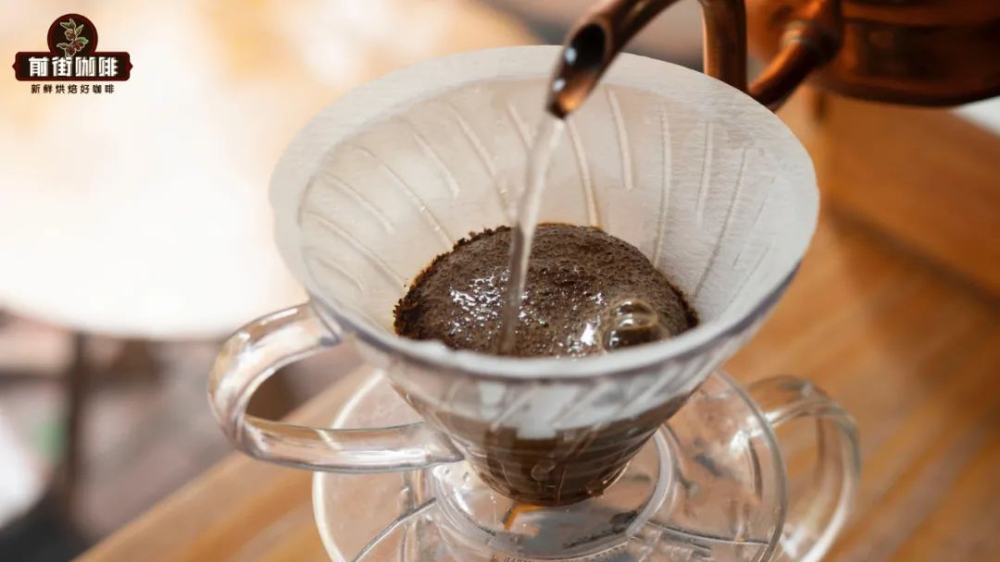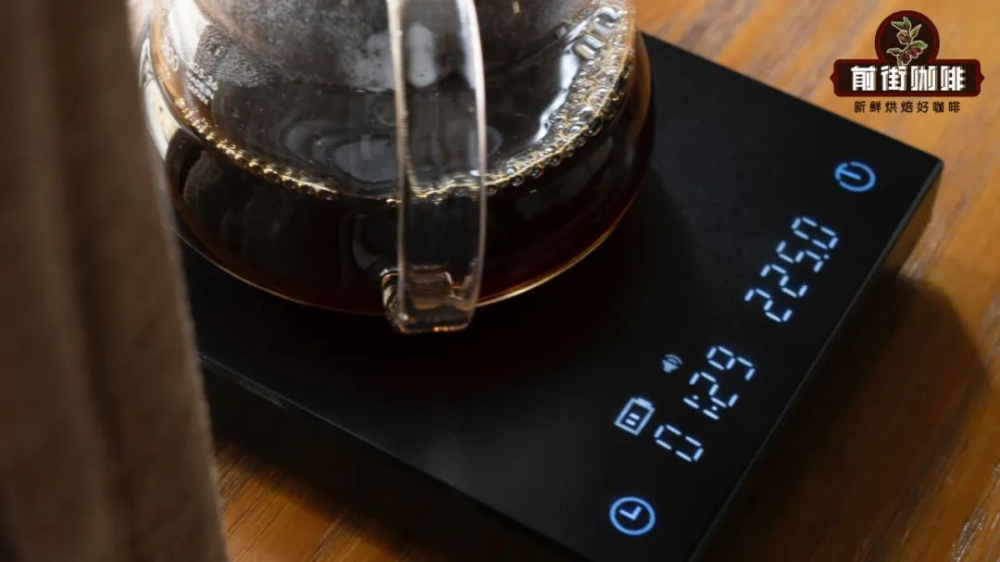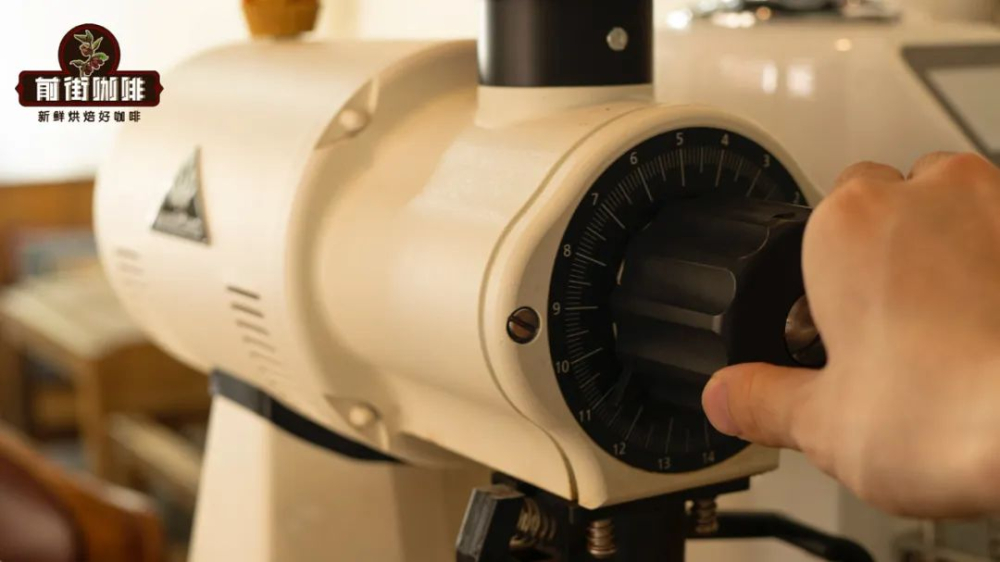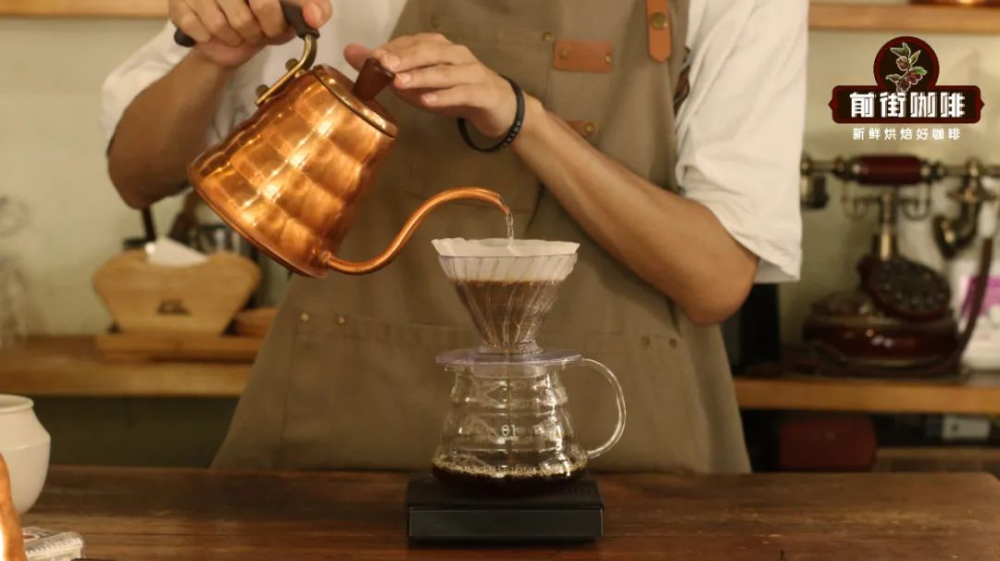What if the deep-baked coffee is too thin? How to flush out the alcohol thickness of hand-brewed coffee?
In the description article shared with you yesterday, the paragraph "mellow thickness" aroused a response from a large number of coffee friends, and a friend asked him backstage that the deep-roasted coffee tasted thin. Is there any way to improve the mellow thickness of the coffee?

Repopularize the science: alcohol thickness refers to whether the amount of coffee liquid in the mouth is light or thick. This has something to do with the concentration of coffee liquid, the lower the concentration is, the thinner the concentration is, and the higher the concentration is, the thicker it is, while the deep-roasted coffee beans are more likely to flush out the mellow taste because of their loose texture. So, if the deep-roasted coffee usually tastes thin, you can observe the data during brewing to find out where the problem lies and adjust it.
First, the ratio of powder to water
Qianjie will adjust the proportion of deep-roasted coffee between 1:14 and 1:15 when brewing deep-roasted coffee. Once the water is higher than 15%, the concentration will be diluted and the taste will be easy to be thin. Therefore, it is most appropriate to control the proportion of products at 1:15.

Because everyone's perception of taste, taste and concentration is different, so if you think this ratio is still light, the taste is thin, or you can reduce the proportion of water from 1:13 to 1:14. Or maybe there is something wrong with the control of time.
Second, cooking time
Even if you change the ratio several times and the deep-roasted coffee is still thin, there is a good chance that the extraction is not enough. At this time, you can observe the cooking time, if you use more than 15g beans, the cooking time is about 1 minute and 30 seconds, it is likely to be grinding too coarse, resulting in the flow rate of water too fast.

that! We can fine-tune the grinding and control the brewing time to the interval between 2:00 and 2:30, so that the coffee can be extracted more fully, and the taste can naturally be fuller.

Third, filter cup selection
In the front street, instead of the common V60 filter cup, the kono filter cup is used when cooking deep baked beans. This is because the diversion rib design of the V60 filter cup makes it faster to enter the water and is more suitable for medium-to-shallow roasted coffee. Because they need fine grinding to show more layers of the flavor of the extraction, if the extraction speed of the filter cup is slow, it is very easy to have the phenomenon of over-extraction, so it is said that the V60 filter cup with fast water speed is more suitable for brewing medium and light roasted coffee beans.

Deep-roasted coffee beans have a loose texture and high extraction efficiency (it is easy to extract aromatic substances), so use a thicker grinding that is relatively light-roasted to reduce its extraction efficiency (to prevent over-extraction). At the moment, if the V60 filter cup with faster launching speed is used, it is easy to form the phenomenon of insufficient extraction. While the diversion ribs of the kono filter cup are only distributed in the lower part, the effect of this design is to reduce the launching speed and prolong the soaking and extraction time of coffee powder, so Qianjie will use the kono filter cup as the extraction apparatus on the deep-roasted coffee beans, so as to make the extraction more complete and taste thicker.

IV. Water injection techniques
The method of water injection here does not mean that it is a three-stage method or an one-knife method, but that we should pay attention to avoid washing the cup wall with water as far as possible when injecting water. What's the problem if the column of water rushes to the wall of the cup during cooking?

That's right! The water will flow directly down the wall of the cup, and what falls into the lower pot is not the extracted coffee liquid but ordinary hot water, reducing the extraction and diluting the rest of the coffee liquid in the next pot, thus making the taste thinner. So try to avoid scouring the cup wall many times when injecting water into the circle, so as to ensure a satisfactory taste.
-END-
Front Street Cafe
No. 10 Baoqian street, Yandun road, Dongshankou, Yuexiu district, Guangzhou, Guangdong province

Important Notice :
前街咖啡 FrontStreet Coffee has moved to new addredd:
FrontStreet Coffee Address: 315,Donghua East Road,GuangZhou
Tel:020 38364473
- Prev

How to make sweet-scented osmanthus latte Australian white Dirty coffee? Is it good to make coffee with sweet-scented osmanthus?
I would like to ask: who does not want to have a cup of coffee with the characteristics of the season in this sentimental autumn to feel the cool beauty of autumn? You all want to drink, right? I really can't help it. Today, Qianjie will take out the treasured sweet-scented osmanthus and use it to teach everyone to make coffee with autumn flavor. Why choose sweet-scented osmanthus? The fragrance of sweet-scented osmanthus is rich and strong.
- Next

What should I do if the coffee is blocked and not put into the water? How to make a coffee bag without wasting?
After reading the title, I believe that some friends have repeatedly issued the cry of "yes, yes, so am I." and quickly slide down to solve the doubts in my heart. Obviously follow the steps in the tutorial: tear open-hang-boil water-inject water-wait for it to finish dripping. However, it seems to be a long time ago, why is the water still floating on it, coffee?
Related
- Beginners will see the "Coffee pull flower" guide!
- What is the difference between ice blog purified milk and ordinary milk coffee?
- Why is the Philippines the largest producer of crops in Liberia?
- For coffee extraction, should the fine powder be retained?
- How does extracted espresso fill pressed powder? How much strength does it take to press the powder?
- How to make jasmine cold extract coffee? Is the jasmine + latte good?
- Will this little toy really make the coffee taste better? How does Lily Drip affect coffee extraction?
- Will the action of slapping the filter cup also affect coffee extraction?
- What's the difference between powder-to-water ratio and powder-to-liquid ratio?
- What is the Ethiopian local species? What does it have to do with Heirloom native species?

